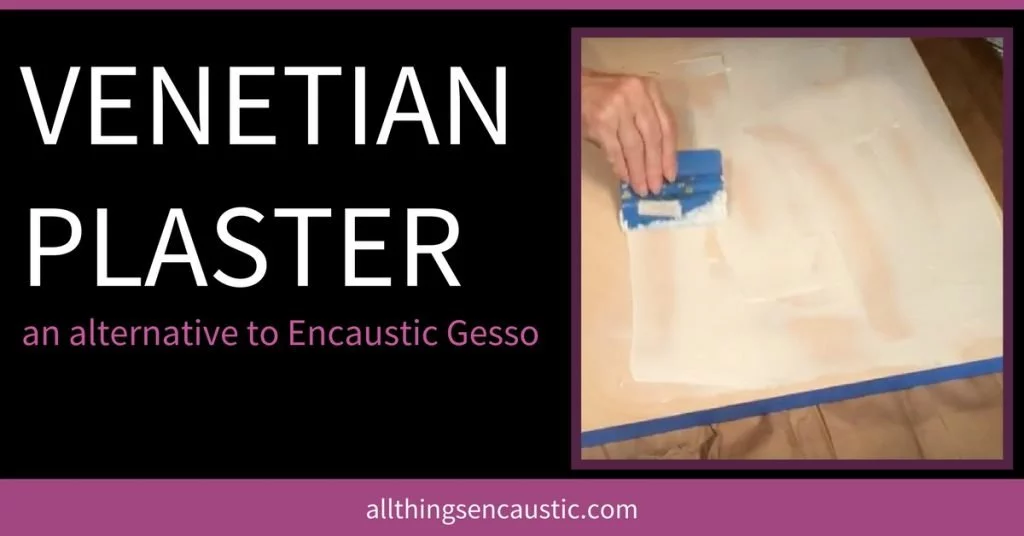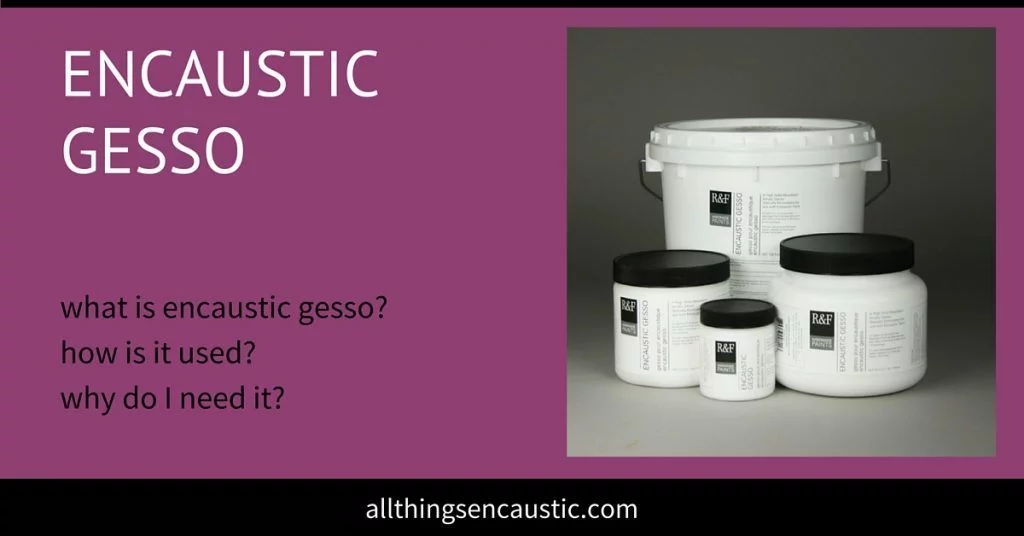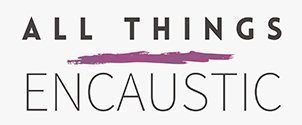Last month Georgia Ferrell shared a post about her experiments with Venetian Plaster on Jute and Burlap for encaustic surfaces. In this post, Dianne Jean Erickson demonstrates how to use Venetian Plaster as an alternative to Encaustic Gesso when preparing a panel substrate.
Introduction to Encaustic
It was about 8 years ago, after a couple of workshops, that I fell in love with encaustic. After the first workshop I was sure I’d never go there….hot wax and fire in my studio? Surely I would burn it down! Yet eventually I couldn’t resist this wonderful medium. I did fuse with a heat gun for a few years until I used the butane torch in a workshop and didn’t look back. So far the studio stands.
3 Ways to Prime a substrate for Encaustic Painting
There are many ways to prepare a substrate before beginning an encaustic painting. Here are just a few…
Venetian Plaster as a primer
I have to admit that using venetian plaster was not my original idea, so I had to backtrack and find the book that tipped me off to this undercoat medium. The book is by Lissa Rankin, Encaustic Art (a classic and must-have book). She has a section on ‘Types of Grounds’ if you are looking for alternatives.
In the video below, I explain how to apply venetian plaster to a wood panel substrate.
After experimenting a bit, this is the method I’ve found that works for me. I love the velvety white mat surface. I gently sand after each coat (two or three) and then start with a clear coat of medium. You can then apply white wax for a whiter base.
One could also use venetian plaster to make texture on the surface. But, in my experience with texture: you have to live with it and it’s hard to make go away! So hopefully you’ve thought it through. I have not been tempted as it locks you into a path, and I’m always veering off the path.
Encaustic Gesso as a primer
Encaustic Gesso is more expensive than venetian plaster, but I haven’t used it so can’t give my opinion or compare. Since I started using venetian plaster when I started using wax and it works so well, I haven’t been attempted to use anything else, except wax medium.
Beeswax primer layer
Of course you can use wax. However, wax, especially white wax, is a bit more expensive than venetian plaster in the long run. When using as a base I put down a layer of clear wax (making sure to heat the surface before applying), then a layer of white or alternatively, paint a bunch of color down as an undercoat using different colors or the wax container where you throw all the scrap wax. If you are going to use wax transparently, I’d probably go with white. And if I’m in a hurry to start a painting, I use wax because the venetian plaster needs to dry a few hours or overnight. I usually spend a day preparing substrates with venetian plaster so they are ready to use. One of my favorite substrates is an old painting that already has layers.
Tips for working with Venetian Plaster
- On the West Coast I purchase Venetian Plaster at Home Depot (and Lowe’s), but not as available in some Eastern locations, check online for suppliers. Behr Venetian Plaster, and Valspar brand as well. Note that someone on FaceBook said they bought it and it was clear. Never heard of that before, but make sure its white.
- Two or three coats are better than one, sand lightly between coats (not too much but to get off pieces that could come off at a later date).
- Sometimes if too thin when you put on the first coat of medium, the wood will show through. Add at least two/three coats and let dry a few hours between coats, then overnight to make sure it’s dry.
- Some artists use joint compound. I haven’t used it so can’t compare the two.
- Venetian Plaster comes in a gallon can and runs about $35.
- Both Venetian Plaster and Encaustic Gesso have some acrylic in the mix. However, it does not affect the adherence in this case. In most cases, you don’t want to use acrylic mediums under wax.
Women With Attitude Encaustic Portraits



My recent work has been a series of portraits I lovingly call “Women With Attitude.” See them all on my website. View my other videos on my YouTube channel to see more of my painting process.
Have you tried Venetian Plaster?
Add a comment below to share what your experience using venetian plaster in place of encaustic gesso.






I recently heard about Venetian plaster and came across your video from six years ago while checking into it. Home Depot doesn’t have BEHR PREMIUM PLUS WITH STYLE VENETIAN PLASTER in store or online. They tried to sell me a product called Venetian plaster, but it was a paint. And I can only locate a tech sheet for it on Behr.com. I’m wondering if it was discontinued. Do you still use this product? If it’s no longer available, did you find a substitute? Thank you.
Stephanie Lee makes her own gesso plaster. She mixes the plaster with gesso (not water) and applies it to the board while sanding in between costs. It works great and gives you more time to apply to the surface. I use her formula a lot and it’s is terrific! Check her out!
A thought from a professional plaster artist: I found this posting after the one about using chalk/milk paints as a primer. If you’d prefer to keep the base a natural breathable material (like the chalk/milk paint) without man made fillers then I highly advise picking up a quart of high quality grassllo venetian plaster (freize color, vero, etc). I’d recommend a grassello since its completely smooth although I imagine the marmorino would be fun as well for some added texture play.
It may seem expensive compared to an acrylic plaster like Behr (we call it fake plaster haha) but its made of slacked lime mined from the quarries in italy, the lime is usually slaked for years to make the base before its shipped over. That adds the benefit of not having to worry about it going bad since there’s really NO shelf life. Just store it w/ a layer of water & plastic wrap on top (to keep the plaster from converting back to its natural stone state). If it does happen to dry out its easily converted back by adding water (to re-hydrate the lime) mixed well, & your good to go! You can also adjust the thickness to your liking by allowing water to evaporate from the mixture until its at the ideal thickness for your application.
Its an amazing material & I imagine would be very addicting as an Encaustic base…thank u for sharing such a great idea!!
Hi Jessica,
If you work on wood pannels, do you need a prmer base before putting the plaster?. I read that on the Vessari website. I ordered the venetian plaster from them.
I love the technique. I’ve used Bher on my walls and love working with it. I’ve noticed it’s been about a year since your post. We’re there any problems that developed in your artwork as time went by?
I had success using Vasari Venetian Plaster as a base with encaustic on top. It’s on instagram at #larasencaustics.
Can beeswax be burnt?
Not sure what you mean…burnt for effect? If you heat beeswax to high there are dangerous fumes. I heat to about 150 degrees.
150 to 180, never over 200.
I have been using Venetian Plaster, but I saw some was authentic and some had acrylic. Knowing acrylic was not good with wax I chose authentic. But it is 75$ for a 5 kg tub. But that is still less than encaustic gesso at 23$ a pint on amazon. I find it cracks sometimes. Like crackle paint. I’m not sure why.
I read you must use an adhesive. Roll on? What is that.
The acrylic type Venitian Plaster works fine, no need to use the expensive one. Cracks can happen if you put it on too thick. Best to put on thin coats, around 3, sand lightly between each layer.
Could you tell me what is that pen-like item you are using? Is that a stylus or some sort of heated flow pen? Thank you for your time.
Don;t know what that’s about, I never use an adhesive.
Thanks for the information Dianne. I really like your art – very original and refreshing. Do you use the plaster as a feature in your art, as texture perhaps? Or is it always used as a primer?
Thank you! I’m not using the plaster for texture in my newest artwork, the portraits of women, but it certainly can be used that way. If you want to experiment I would use on some smaller substrates first to see how you like it. Thicker plaster will take longer to dry so be sure it’s completely dry before adding wax.
Hi Diane. I have a question that may sound silly to you; why do you choose to Gesso or plaster your board?Unless it is important for you to have a white background, is there any other advantages to work on a prepared wood (vs. just the wood exposed)?
The main reason is to have a white background to then apply the wax. The white keeps the colors true, if that is a concern. Using white wax is more expensive, and also the white wax can easily mix with the wax you put on top of it, which may not be the desired outcome. If you do use white wax, layer a couple of coats of clear medium may help. I have also found, when using substrates that may have tree resin or glue that can’t readily be seen, the plaster seals and protects from any bleed through of those products.
And a word of warning about substrates. I ordered a few Da Vinci Pro Birch Wood Painting Panels from Jerry’s Artorama. When I went to frame them, they varied from the 18″ x 24″ by as much as 1/2 inch, and some were cracked on the back and sides. The panels are from China, so beware…